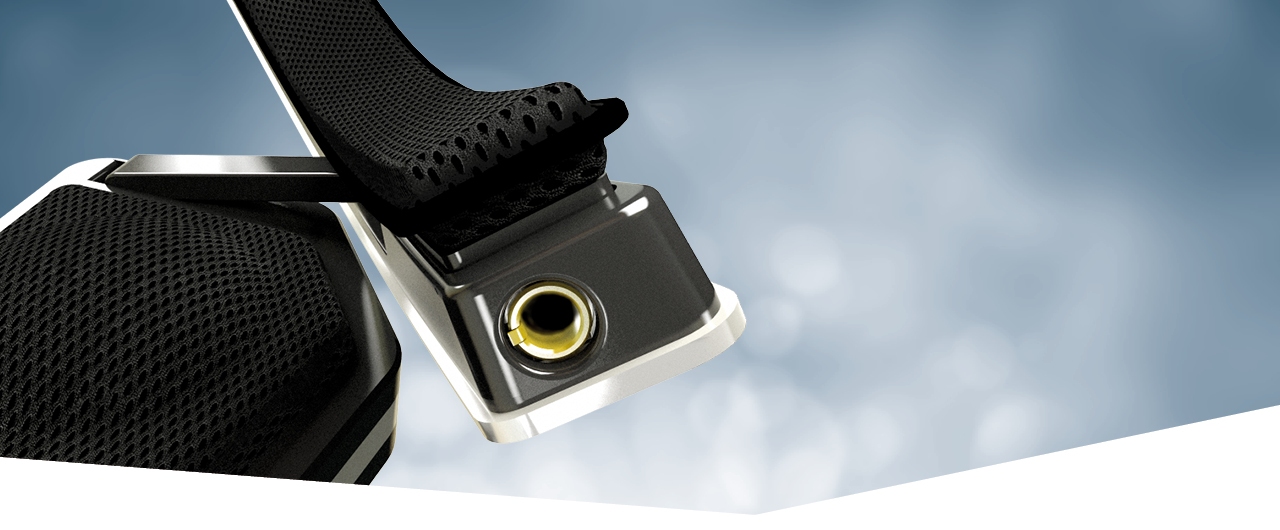

Philosophy
New materials, improved computer simulations, revolutionary measurement methods like psychoacoustics, artificial head (head and torso simulation), laser vibrometers and others opened new possibilities for the construction of acoustic devices. So the master minds behind the K 1000, Ryback and Renner, decided to apply their experiences to the development of the ultimate headphone – the MYSPHERE 3.
- Since the earphone is kind of levitating over the ear, the overall weight has been optimized to bit more than 320 g.
- All highly stressed external parts are either made of milled and anodized aluminium or stainless steel. These materials are extremely durable and corrosion-resistant.
- The internal materials and connectors are highly elastic and environmentally resistant, as well as attenuating body-borne noise. Durability was a main construction principle.
- The transducers are protected against dust and contact by an open-pored splash-water proof fabric.
- The electrical internal wiring is strictly symmetrical. Exact the same wire lengths no matter whether the cable is connected to the left or right side.
- All cables and wires are designed in a lightweight version to avoid the microphonics effect and to minimize the overall weight.
Behind MYSPHERE 3
The roots of MYSPHERE 3 go back to the legendary flagship headphone K 1000 of AKG, introduced to the market in 1989. Two outstanding acoustic engineers are associated with the history of the K 1000: Helmut Ryback, who developed the AKG K 240 DF, at that time reference headphone for many radio stations, and Heinz Renner, leading in concept and development of the K 1000, together with Helmut Ryback.
After extensive evaluation of all available transducer principles, including electrostatic and orthodynamic drivers, the developers decided to adopt the dynamic driver method for the K 1000, mainly because it is far superior for accelerating the air molecules at low frequencies. A novel radial magnet array was designed to minimize the influence of mechanical parts in the sound field. In order to avoid nonlinearities of the membrane movement the idea of the quadrangular shape was born. Over all, the open construction in all directions gave the same impression to the listener as sitting in an ideal room with optimal speakers. So the K 1000 became a legend.
The times are a-changing …
The K 1000 was discontinued, unfortunately, but there are many of them still around and in use. In the meantime, many things have changed in the industry: new advanced materials, improved computer simulations, revolutionary measurement methods like psychoacoustics, artificial head (head and torso simulation), Laser Doppler Vibrometer measurement techniques and others opened new possibilities for the construction of acoustic devices. So the master minds behind the K 1000, Ryback and Renner, decided to apply their wide experiences to the development of the ultimate headphone – the MYSPHERE 3.
The main principles of the K 1000 have been carried over, though enhanced by the new materials and measurement technologies: The fully open construction principle, the radial magnet system, the quadrangular membrane. But many details are new and allow major improvements. Some of them have been registered as international patents. The membrane comes nearer to the ear to assure better sensitivity and higher bass levels. The frequency response reaches far into the ultrasound range. All surface materials are extremely durable and water resistant. A revolutionary headband concept admits a perfect fit nearly without pressure on the ear.


